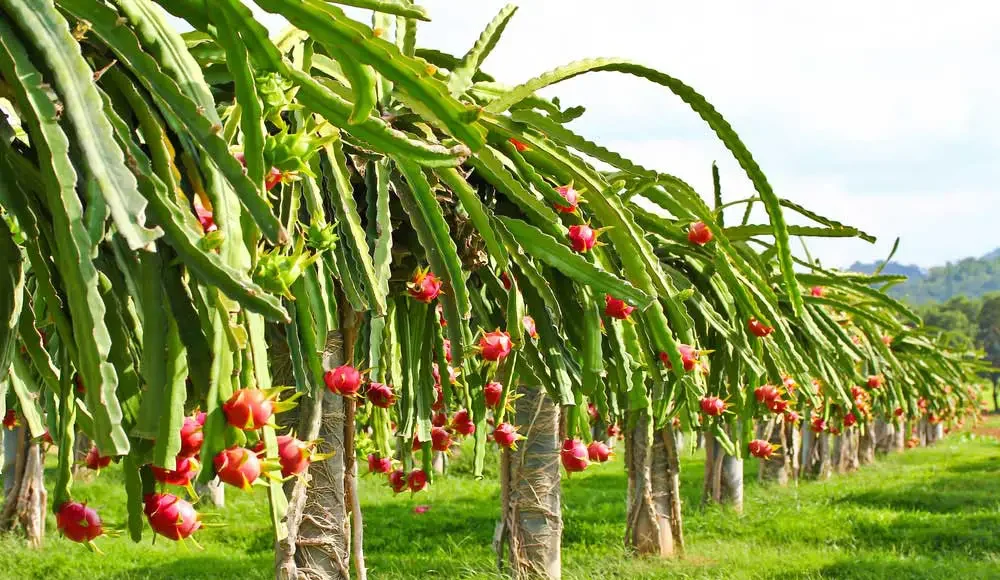Dragon fruit, also known as pitaya, is a tropical fruit that is popular for its distinctive appearance, sweet taste, and numerous health benefits. It is native to Central America and is now widely grown in Asia, including countries like Thailand, Vietnam, and the Philippines. In recent years, it has gained popularity in other parts of the world, including Africa.
The fruit is typically oval or oblong-shaped, with a rough outer skin that is covered in green or pink scales. The flesh inside can be either white or pink, with small black seeds scattered throughout. The taste is often described as a mix of kiwi and pear, with a slightly sweet and tangy flavor.
Dragon fruit is a rich source of essential vitamins and minerals, including vitamin C, vitamin B6, iron, and calcium. It is also high in fiber and antioxidants, which are important for maintaining good health. Eating dragon fruit has been linked to a variety of health benefits, including improved digestion, lower cholesterol levels, and a reduced risk of chronic diseases such as heart disease and diabetes.
The fruit is also low in calories, making it an excellent choice for those looking to maintain a healthy weight. It can be eaten fresh or used in a variety of dishes, including smoothies, salads, and desserts.
In addition to its nutritional value, dragon fruit is also used in traditional medicine. The fruit, as well as the plant, is believed to have healing properties that can help with a variety of ailments, including infections and inflammation.
The demand for dragon fruit has been on the rise in recent years, both domestically and internationally. Farmers in Kenya and other parts of Africa have started growing the fruit to meet the growing demand, which has created new economic opportunities for local communities.
Overall, dragon fruit is a versatile and nutritious fruit that offers many health benefits. As its popularity continues to grow, it is likely that we will see more of it in supermarkets and on restaurant menus.











